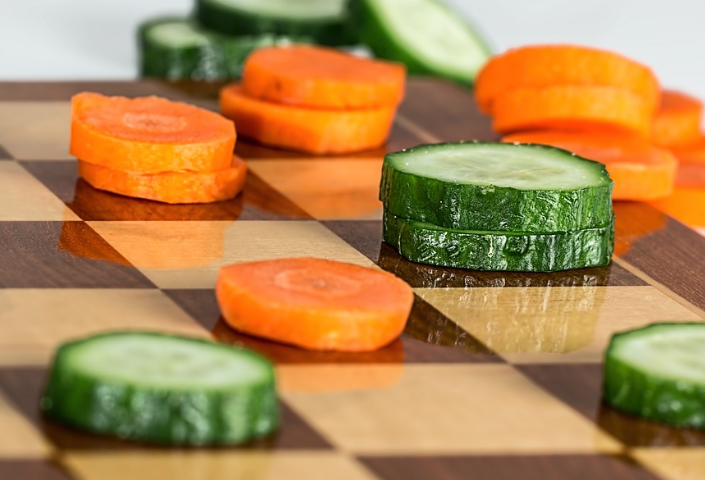How can I make healthier food choices?

The U.S. Department of Health and Human Services (HHS) and Department of Agriculture (USDA) offer tips for healthy eating in Dietary Guidelines for All Americans.
- Focus on fruits. Eat a variety of fruits — fresh, frozen, canned, or dried — rather than fruit juice for most of your fruit choices. For a 2,000-calorie diet, you will need 2 cups of fruit each day. An example of 2 cups is 1 small banana, 1 large orange, and 1/4 cup of dried apricots or peaches.
- Vary your veggies. Eat more:
- dark green veggies, such as broccoli, kale, and other dark leafy greens
- orange veggies, such as carrots, sweet potatoes, pumpkin, and winter squash
- beans and peas, such as pinto beans, kidney beans, black beans, garbanzo beans, split peas, and lentils
- Get your calcium-rich foods. Each day, drink 3 cups of low-fat or fat-free milk. Or, you can get an equivalent amount of low-fat yogurt and/or low-fat cheese each day. 1.5 ounces of cheese equals 1 cup of milk. If you don’t or can’t consume milk, choose lactose-free milk products and/or calcium-fortified foods and drinks.
- Make half your grains whole. Eat at least 3 ounces of whole-grain cereals, breads, crackers, rice, or pasta each day. One ounce is about 1 slice of bread, 1 cup of breakfast cereal, or 1/2 cup of cooked rice or pasta. Look to see that grains such as wheat, rice, oats, or corn are referred to as “whole” in the list of ingredients.
- Go lean with protein. Choose lean meats and poultry. Bake it, broil it, or grill it. Vary your protein choices with more fish, beans, peas, nuts, and seeds.
- Limit saturated fats. Get less than 10 percent of your calories from saturated fatty acids. Most fats should come from sources of polyunsaturated and monounsaturated fatty acids, such as fish, nuts, and vegetable oils. When choosing and preparing meat, poultry, dry beans, and milk or milk products, make choices that are lean, low-fat, or fat-free.
- Limit salt. Get less than 2,300 mg of sodium (about 1 teaspoon of salt) each day
- https://www.womenshealth.gov/a-z-topics/overweight-obesity-and-weight-loss
